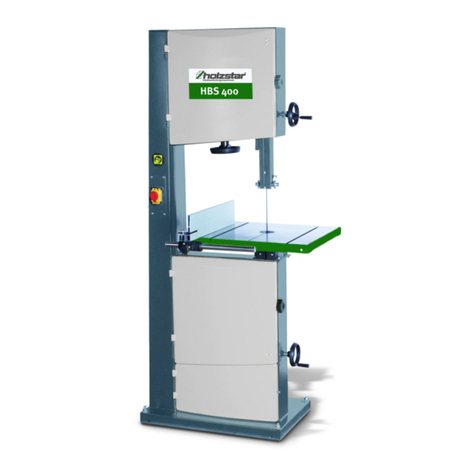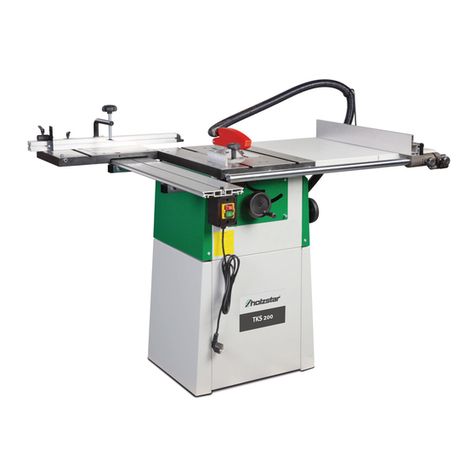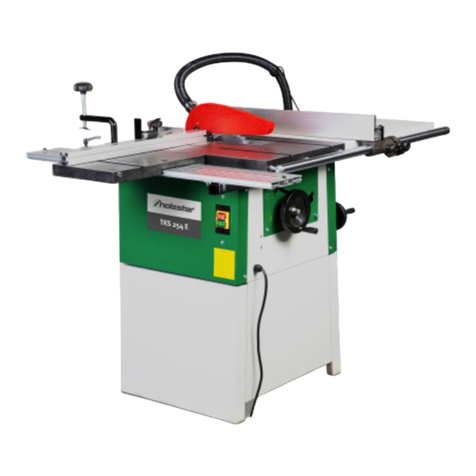
Safety
FKS 315-2000 E | Version 1.11 5
2.4 General safety instructions
This machine is equipped with various safety devices de-
signed to protect both the operator and the machine. Ho-
wever, this cannot yet cover all safety aspects and thus
the responsibility of the operator. Before putting the ma-
chine into operation, you must read and fully understand
this chapter. In addition, the operator must also consider
other aspects of the hazard in relation to the environ-
mental conditions and the material.
The following must be observed:
Before connecting the device to the mains, make sure
that all safety devices are in their intended positions. If
possible, check their operation. If it is necessary to re-
move the doors or protective covers, switch off the ma-
chine and unplug the plug from the socket.
- The non-return valves must be free to move and
their function must be checked regularly (several
times a day).
- Do not connect the device to the mains when the
protective cover has been removed.
- To avoid improper operation, familiarize yourself
with the location of the switches before turning on
the machine.
- Memorize the position of the emergency stop
switch so that you can use it immediately at any
time.
- Be careful not to touch any switches while the ma-
chine is in operation.
- Never touch a rotating tool with your hands or other
objects.
- If you are not working on the machine, switch off
the machine at the switch and disconnect the plug
from the socket.
- Before cleaning and maintenance work, switch off
the machine and remove the plug from the mains
socket. Do not turn on the machine until all covers
removed for maintenance have been replaced.
- Do not modify the machine in a way that would
pose a risk to safe operation.
- If you have any doubts about the correctness of
your procedure, contact a responsible person.
- Do not neglect to carry out regular inspections in
accordance with the instructions for use.
- Check and ensure that the machine is not subject
to any malfunctions caused by the user.
- After the work has been completed, adjust the ma-
chine so that it is ready for another work cycle.
- If there is a power failure, switch off the machine
immediately.
- Do not contaminate or damage the safety devices.
- Do not modify or remove the safety plates.
- Keep the work area free. Overcrowded areas and
workbenches cause injury.
- Consider the environment of the workspace.
- Do not expose tools to rain.
- Do not use tools in humid or wet environments or
near flammable liquids or gases.
- Make sure the workspace is well lit.
- Do not work under the influence of drugs or alcohol
or when you are tired.
- Be careful not to damage the electrical cables to pre-
vent electric shock (electric shock).
- Maintenance on electrical parts of the unit may only
be performed by a qualified person.
- Always use the tool that is suitable for the specified
work and that meets the machine specifications. The
tools, knife blocks, must comply with EN 847-1.
- Replace blunt tools as soon as possible because bl-
unt tools can cause injury or damage.
- Never use the tools at speeds above the manufactu-
rer's recommended rated speeds.
- Check regularly that the safety covers are properly
installed and undamaged. Repair damaged covers
immediately or replace them.
- Make sure that there are no nails, screws or other
objects in the workpieces to be machined.
- Never use tools that are deformed, broken or dull.
- Do not use compressed air to clean the machine or
to remove chips.
- Before starting work, take items such as Rings,
watches, bracelets, ties, etc., as they can get caught
on different parts of the machine and get caught.
- Protect and secure your hair so that it is not caught
by moving parts on the machine.
- Wear shoes that are recommended or required by
the health and safety regulations of all countries.
- Always wear the necessary safety equipment
(safety glasses, apron, safety shoes, hearing pro-
tection, etc.).
- Wear a helmet if there are obstacles above your
head - in the work area.
- Always wear a protective mask while working on
material that generates dust during the process.
- Never wear loose work clothing.
- Only use original HOLZSTAR spare parts and ac-
cessories.





































